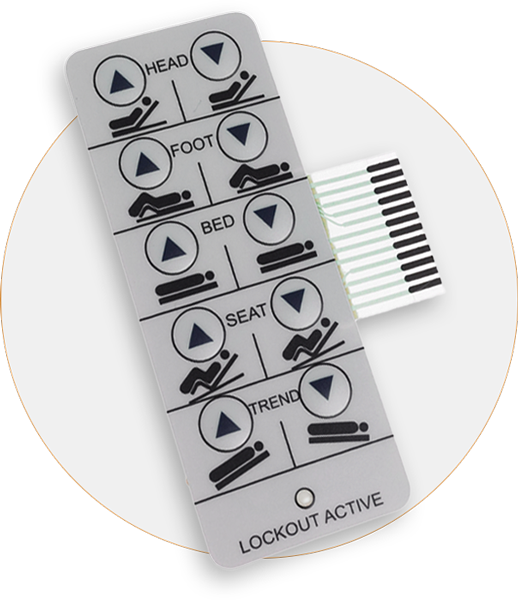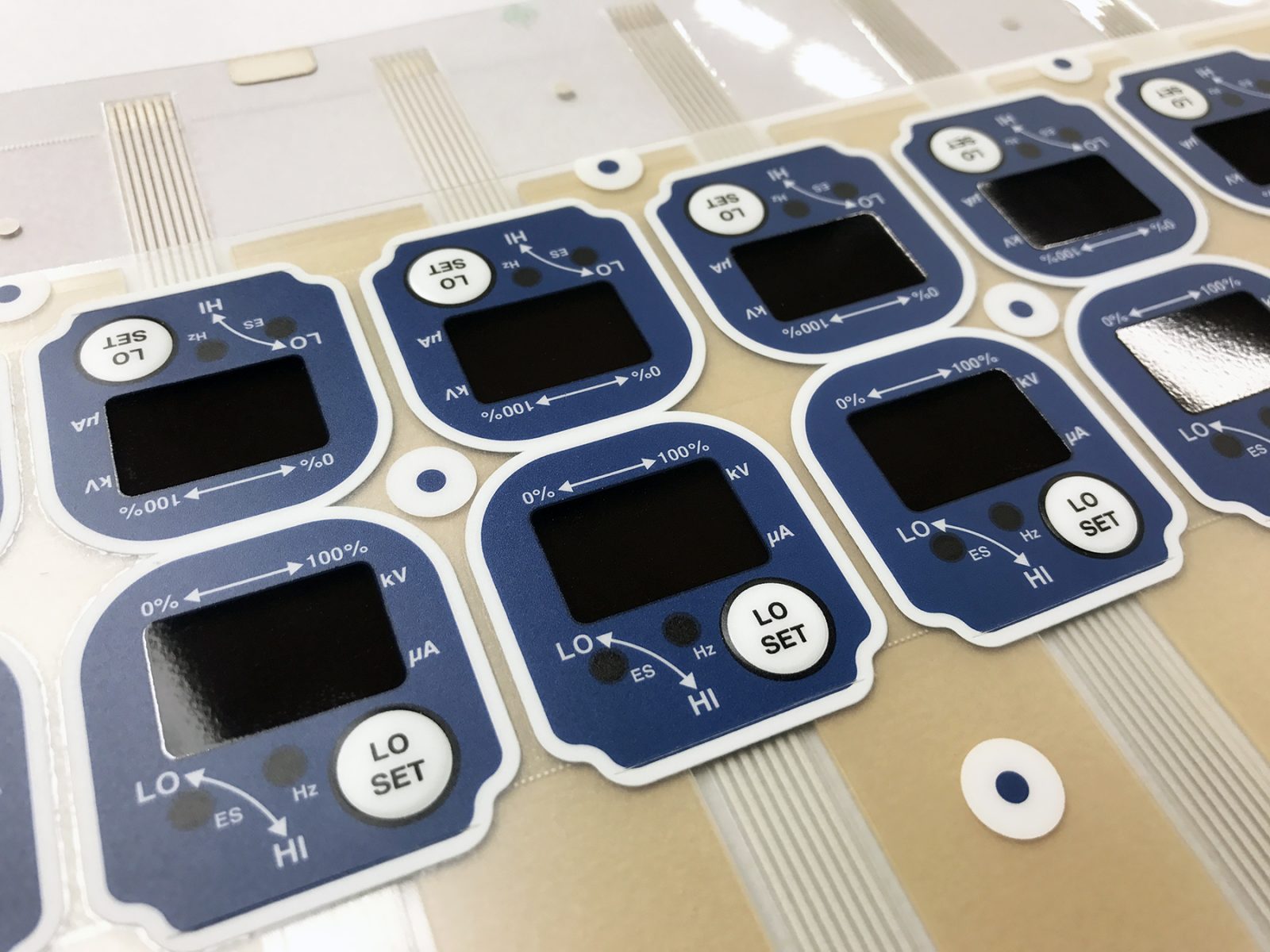Choosing the right membrane switch manufacturer can positively impact your product's quality.
Choosing the right membrane switch manufacturer can positively impact your product's quality.
Blog Article
Everything About Membrane Change: Comprehending Its Style and Capability
When you think concerning the control user interfaces in modern devices, membrane buttons typically come to mind. Let's discover what collections membrane changes apart from other control systems.
What Are Membrane Switches?

Their smooth nature makes them very easy to tidy and immune to dust and dampness, a crucial attribute in several settings. Membrane layer buttons can additionally be customized relating to form, dimension, and graphics, allowing manufacturers to create one-of-a-kind user interfaces tailored to particular products. Plus, they're light-weight and thin, which helps in decreasing the total mass of devices. On the whole, membrane buttons play a significant role in boosting customer experience across a large variety of applications.
How Membrane Layer Switches Work
When you push a key on a membrane layer switch, it activates an uncomplicated yet efficient device. The top layer, typically constructed from flexible product, pushes down onto a conductive layer beneath it. This action bridges the void in between conductive traces, completing an electric circuit. As quickly as the circuit closes, it sends a signal to the gadget's controller, which translates your input.
You'll observe that the responsive feedback varies based upon the button layout, offering either a soft click or a much more pronounced reaction. Once you launch the secret, the membrane layer go back to its original placement, resuming the circuit and stopping the signal. This procedure occurs practically instantly, making sure a receptive customer experience.
Membrane layer buttons are popular due to their resilience and resistance to dirt and moisture, making them ideal for numerous applications, from family devices to clinical tools. Recognizing this operation aids you appreciate their widespread use.
Secret Parts of Membrane Layer Switches
Comprehending the vital elements of membrane buttons is essential for grasping their performance and style. The protective layer shields versus environmental aspects and use, extending the switch's lifespan. By understanding these parts, you'll get insight into exactly how membrane layer switches over operate and their relevance in different applications.
Products Used in Membrane Switch Over Layout
The performance and sturdiness of membrane layer switches greatly depend on the materials utilized in their style. You generally come across polyester and polycarbonate as primary substrates because of their exceptional strength and versatility. These products resist scratches and chemicals, making them excellent for requiring environments.
The conductive layers commonly utilize silver or carbon, chosen for their integrity and conductivity. membrane switch manufacturer. Silver supplies premium performance, while carbon is a cost-effective choice. For the overlay, you might take into consideration a matte or shiny coating, depending upon your visual needs and customer experience
Adhesives play an essential role as well; they bond layers securely and ensure long life. Make certain to select adhesives that endure environmental aspects like temperature and moisture. Do not forget the value of an excellent printing technique for graphics, as it boosts both capability and aesthetic charm. Selecting the ideal materials will assure your membrane button stands the examination of time.
Layout Considerations for Membrane Buttons
While designing membrane layer buttons, it's vital to think about various aspects that influence their functionality and user experience. Beginning by focusing on the layout and switch dimension; ensure they're intuitive and very easy to browse. Consider the responsive feedback you wish to give-- will customers need a recognizable click or a softer touch? Additionally, think about the products you'll utilize, as they'll influence toughness and aesthetic appeals.
Don't ignore the visuals layout; clear labeling and color contrast are significant for exposure. Verify your layout suits environmental aspects, like moisture or temperature level variations, which could impact efficiency. Remember the significance of testing prototypes with actual users to gather feedback and make essential adjustments. This iterative procedure helps you refine the layout, verifying it meets both practical and visual requirements efficiently. By thoroughly taking into consideration these elements, you'll produce a membrane layer switch that boosts functionality and satisfaction.
Applications of Membrane Layer Switches
Membrane buttons are functional elements found in numerous applications, from commercial tools to customer electronic devices. You'll see their impact in devices that require long lasting interfaces and in gadgets that benefit from streamlined designs. Recognizing these applications assists you appreciate the performance and functionality of membrane buttons visit the website in day-to-day innovation.
Industrial Devices Use
When you're looking to improve the performance of commercial devices, membrane layer switches use a reputable option that integrates resilience with straightforward layout. These buttons are ideal for harsh atmospheres, offering resistance to dirt, dampness, and chemicals. You'll find them in control panels for making equipments, HVAC systems, and medical tools, where their website precision and responsiveness are important. Their reduced account means they fit flawlessly into numerous devices, conserving important space while keeping simplicity of usage. With customizable graphics and backlighting choices, you can develop an instinctive user interface for operators, improving efficiency and safety and security. Plus, their long life expectancy lowers upkeep prices, making them a wise financial investment for your industrial applications. Accept membrane layer buttons to improve your operations and boost general performance.
Consumer Electronic Devices Integration
In the domain name of consumer electronic devices, membrane switches play a crucial role in enhancing individual communication and tool capability. You'll discover them in devices like microwaves, remotes, and video gaming consoles, providing a seamless means to connect with technology. Their smooth layout permits very easy integration right into numerous items, making controls instinctive and straightforward. With their capacity to include graphics and backlighting, you can delight in a contemporary visual that complements the tool's general look. Membrane buttons likewise ensure sturdiness and resistance to dirt and moisture, prolonging the life-span of your electronic devices. By selecting membrane switches, you improve not simply the capability but also the style of your gadgets, making day-to-day interactions smooth and enjoyable.
Advantages and Drawbacks of Membrane Layer Switches
While membrane layer buttons supply a variety of benefits, they additionally come with some drawbacks that you need to take into consideration. One considerable advantage is their portable style, making them ideal for space-constrained applications. They're additionally cost-effective, supplying a resilient remedy with a low manufacturing price. In enhancement, their smooth surface is very easy to clean, boosting hygiene in environments like hospitals.

Nonetheless, there are disadvantages. Membrane layer switches can have a shorter lifespan compared to mechanical buttons, especially under hefty usage. They can likewise be much less tactile, which might impact customer comments during operation. In addition, if damaged, repairing them can be difficult and typically needs full replacement. Inevitably, their level of sensitivity to severe temperature levels and ecological conditions might restrict their efficiency in certain settings. Balancing these benefits Visit This Link and drawbacks will certainly help you establish if membrane buttons are the appropriate suitable for your project.
Frequently Asked Concerns
For How Long Do Membrane Switches Typically Last?
Membrane layer changes normally last in between 5 to ten years, relying on usage and ecological problems. You'll intend to examine variables like wear, exposure to moisture, and temperature changes to assess their durability properly.
Can Membrane Layer Changes Be Customized for Certain Styles?
Yes, you can personalize membrane switches to fit specific layouts (membrane switch manufacturer). You'll have the freedom to select colors, shapes, and formats that match your task's requirements, guaranteeing they blend perfectly with your general visual
What Is the Expense Range for Membrane Layer Switch Over Manufacturing?
The expense array for membrane switch manufacturing generally drops between $1 and $10 per device, depending on factors like layout complexity, amount, and materials. You can get quotes from suppliers to find the very best alternative.

Are Membrane Layer Switches Water Resistant or Resistant?
Membrane layer switches can be designed to be water-proof or immune, relying on products used and construction techniques. If you need them for wet atmospheres, assure you specify those demands throughout the layout process.
Exactly How Do Membrane Switches Over Compare to Traditional Switches?
Membrane layer buttons are usually thinner and much more adaptable than conventional buttons, using a streamlined style. They're often less complicated to cleanse and integrate, yet might not supply the responsive feedback you're utilized to with mechanical alternatives.
Final thought

Report this page